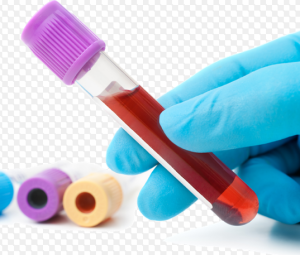Psoriatic arthritis is a chronic inflammatory disease that occurs as a complication of psoriasis. Psoriatic arthritis occurs when a person exhibits the characteristic symptoms of psoriasis skin irritation, redness, itching, skin-thick spots, red with silvery scales on the skin and has symptoms of joint inflammation arthritis , causing pain and stiffness.
The symptoms of this disease can occur gradually and be mild or appear suddenly and be serious. Virtually all joints can be affected, causing morning stiffness, decreased mobility, pain and joint inflammation; changes in the appearance of the nails (grooves, grooves, lifting); swelling, redness and eye pain; red spots on dry skin, usually covered with silvery white scales.
We present 20 aspects of this disease that you need to know:
 1. Psoriatic arthritis occurs most often in people between 30 and 50 years old, and affects men and women almost equally.
1. Psoriatic arthritis occurs most often in people between 30 and 50 years old, and affects men and women almost equally.
2. It is estimated that between 10 and 30% of people with psoriasis develop psoriatic arthritis later.
3. It is estimated that 40% of people with psoriatic arthritis have a close relative such as a father or brother with psoriasis or psoriatic arthritis, suggesting a strong genetic component.
4. To date, the exact cause of psoriatic arthritis is unknown, it is believed to be caused by a combination of genetic, immunological and environmental factors.
 5. Having psoriasis does not mean that you are going to develop psoriatic arthritis, however, it is the biggest risk factor.
5. Having psoriasis does not mean that you are going to develop psoriatic arthritis, however, it is the biggest risk factor.
6. People with psoriasis on the nails of their hands or feet are more likely to develop psoriatic arthritis, the presenter in other parts of the body.
7. To date, there is no evidence that the aggressive treatment of psoriasis helps reduce the possibility of developing psoriatic arthritis.
8. Psoriatic arthritis and rheumatoid arthritis are similar in that they cause chronic inflammation of the joints. The main difference between the two is the presence of psoriatic skin lesions and the distribution of affected joints.
 9. Psoriatic arthritis affects multiple joints and the seals is typically asymmetric, meaning that it may appear on one side of the body and not the other. This is also unlike rheumatoid arthritis, where damage to the joints is usually symmetric (if it stays in the right hand, they have also stopped).
9. Psoriatic arthritis affects multiple joints and the seals is typically asymmetric, meaning that it may appear on one side of the body and not the other. This is also unlike rheumatoid arthritis, where damage to the joints is usually symmetric (if it stays in the right hand, they have also stopped).
10. Psoriatic arthritis causes inflammation in the fingers, causing the appearance of the sausage is not only in the region of the joint.
11. To date, no cure for psoriatic arthritis has been found.
 12. There is no test for the diagnosis of arthritis or psoriatic analysis. A diagnosis is based on clinical judgment and the elimination of other possible diseases.
12. There is no test for the diagnosis of arthritis or psoriatic analysis. A diagnosis is based on clinical judgment and the elimination of other possible diseases.
13. In most cases, skin symptoms begin before the symptoms of arthritis, which makes the diagnosis easier.
14. In some cases, psoriatic arthritis is difficult to distinguish rheumatoid arthritis or gout, particularly in the early stages, where skin lesions are not evident.
 15. The impact of the disease depends on the severity and the sites. Severe psoriatic arthritis in the joints of the spine and large size can seriously affect the fingers occur while it can only be a discomfort.
15. The impact of the disease depends on the severity and the sites. Severe psoriatic arthritis in the joints of the spine and large size can seriously affect the fingers occur while it can only be a discomfort.
16. The treatment of psoriatic arthritis should be supervised by a rheumatologist, and for the treatment of discomfort on the skin, a dermatologist should be consulted. The objectives of the treatment depend on the location and severity of the disease.
17. When psoriatic arthritis and inflammation affecting the tendons that support the joints, the condition is called enthesitis. The pain and stiffness caused by arthritis and psoriatic enthesitis can begin before the joints are affected.
 18. Avoiding refined sugars can help people suffering from psoriatic arthritis have fewer outbreaks. These sugars are usually in candy and other treats, and can increase blood sugar levels and trigger an inflammatory response.
18. Avoiding refined sugars can help people suffering from psoriatic arthritis have fewer outbreaks. These sugars are usually in candy and other treats, and can increase blood sugar levels and trigger an inflammatory response.
19. People with psoriatic arthritis may have periods of remission, where there are virtually no symptoms or signs, and may last for long periods of time, depending on the effectiveness of the treatment.
20. In some patients, psoriasis may be in remission, but not psoriatic arthritis, or vice versa.


